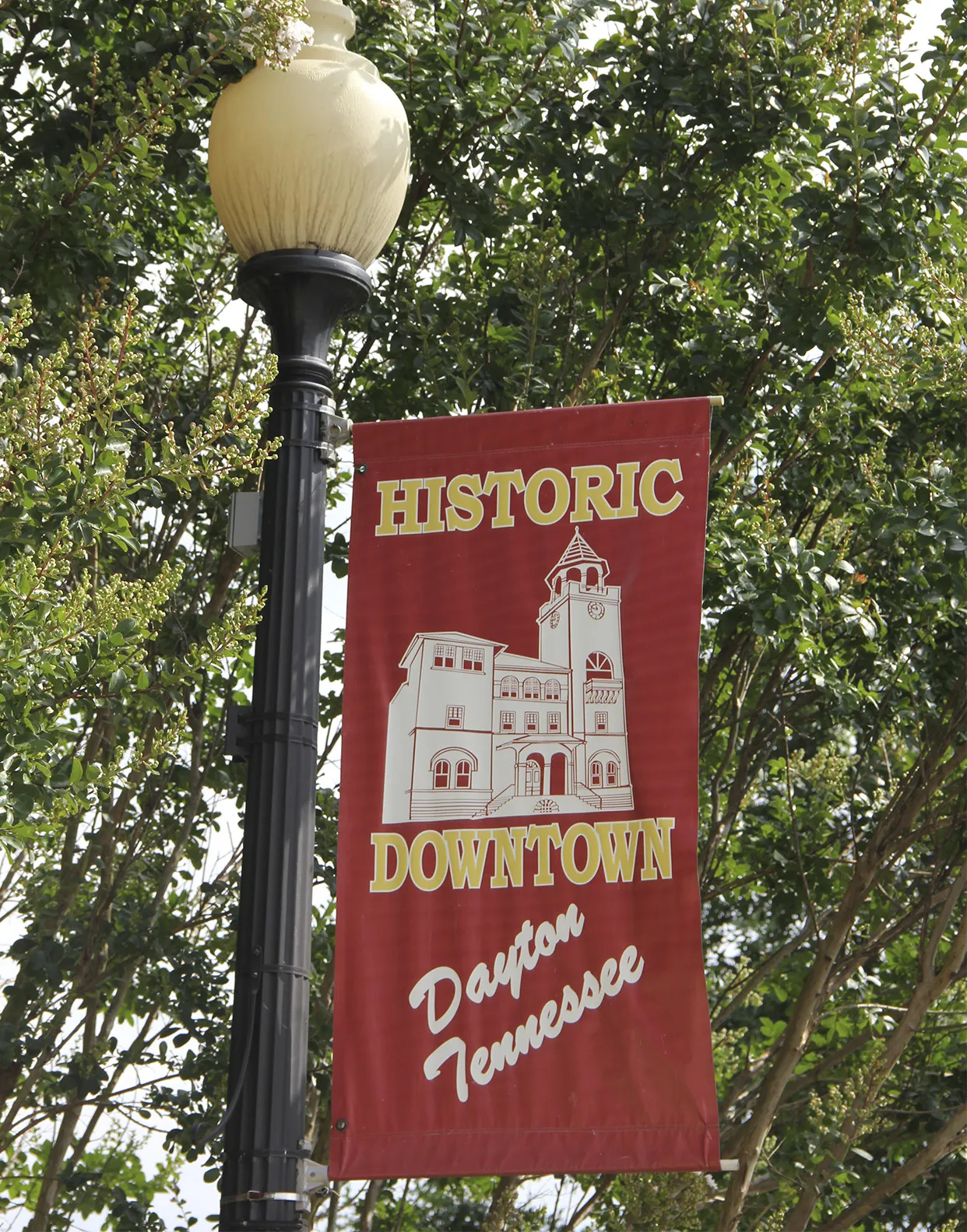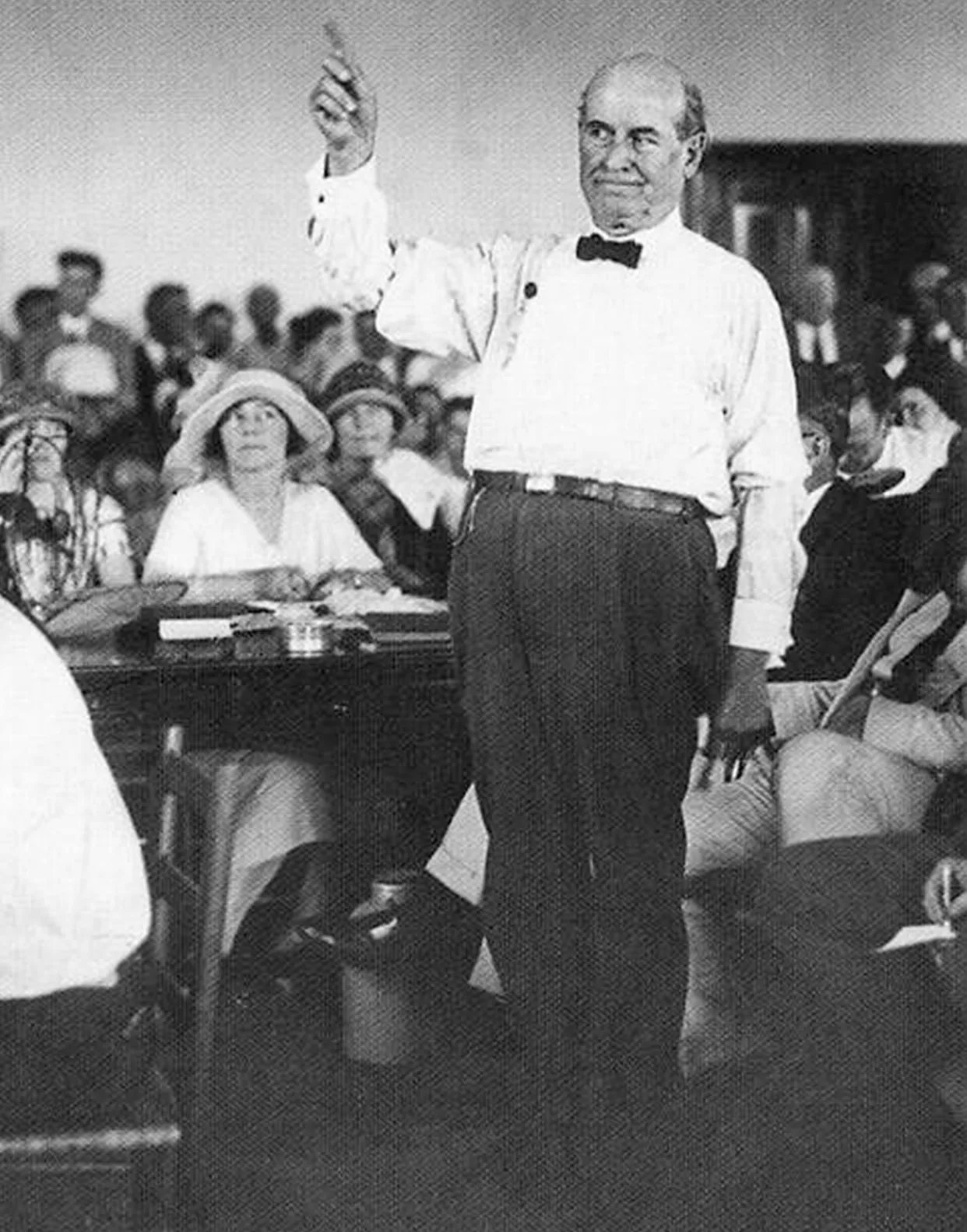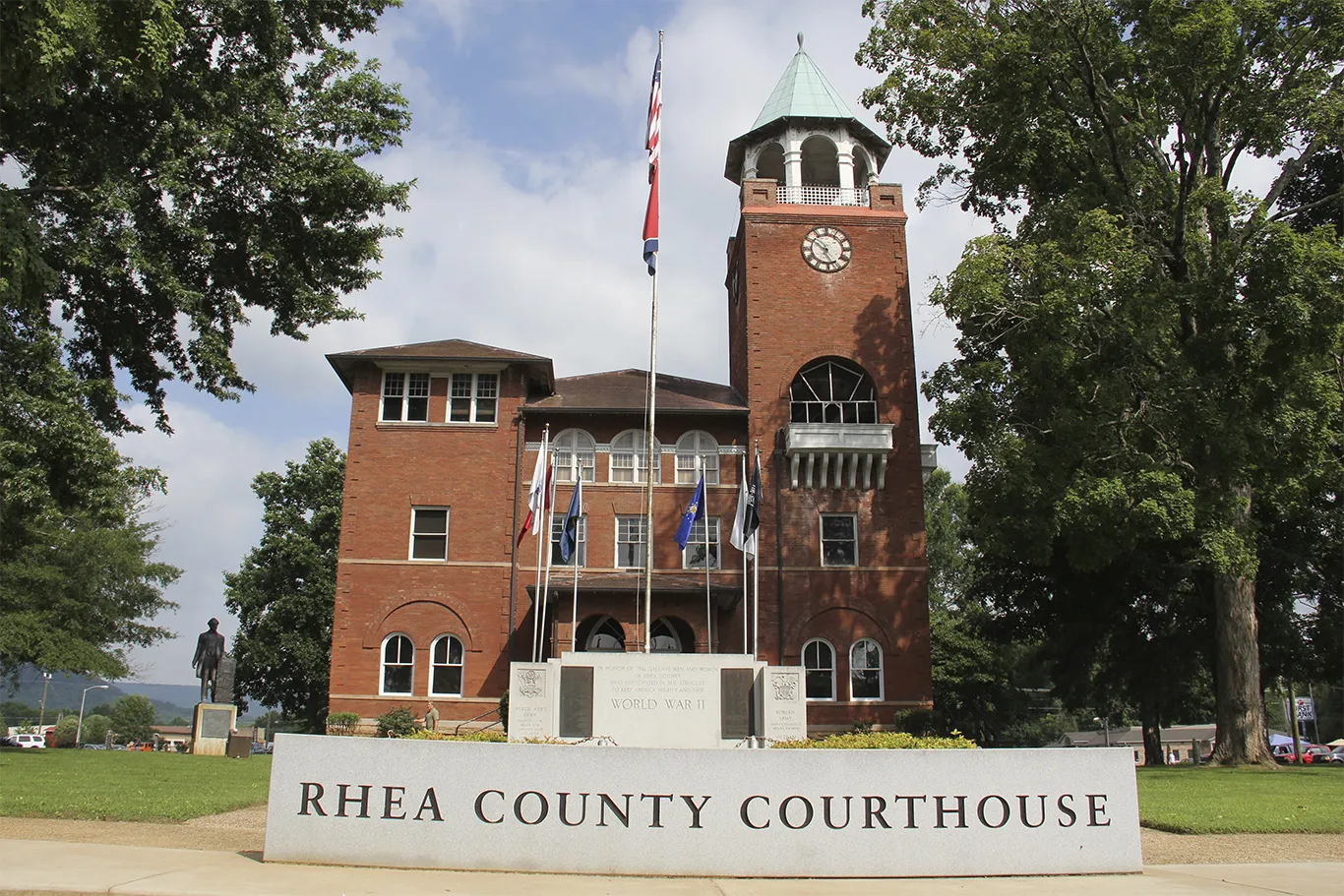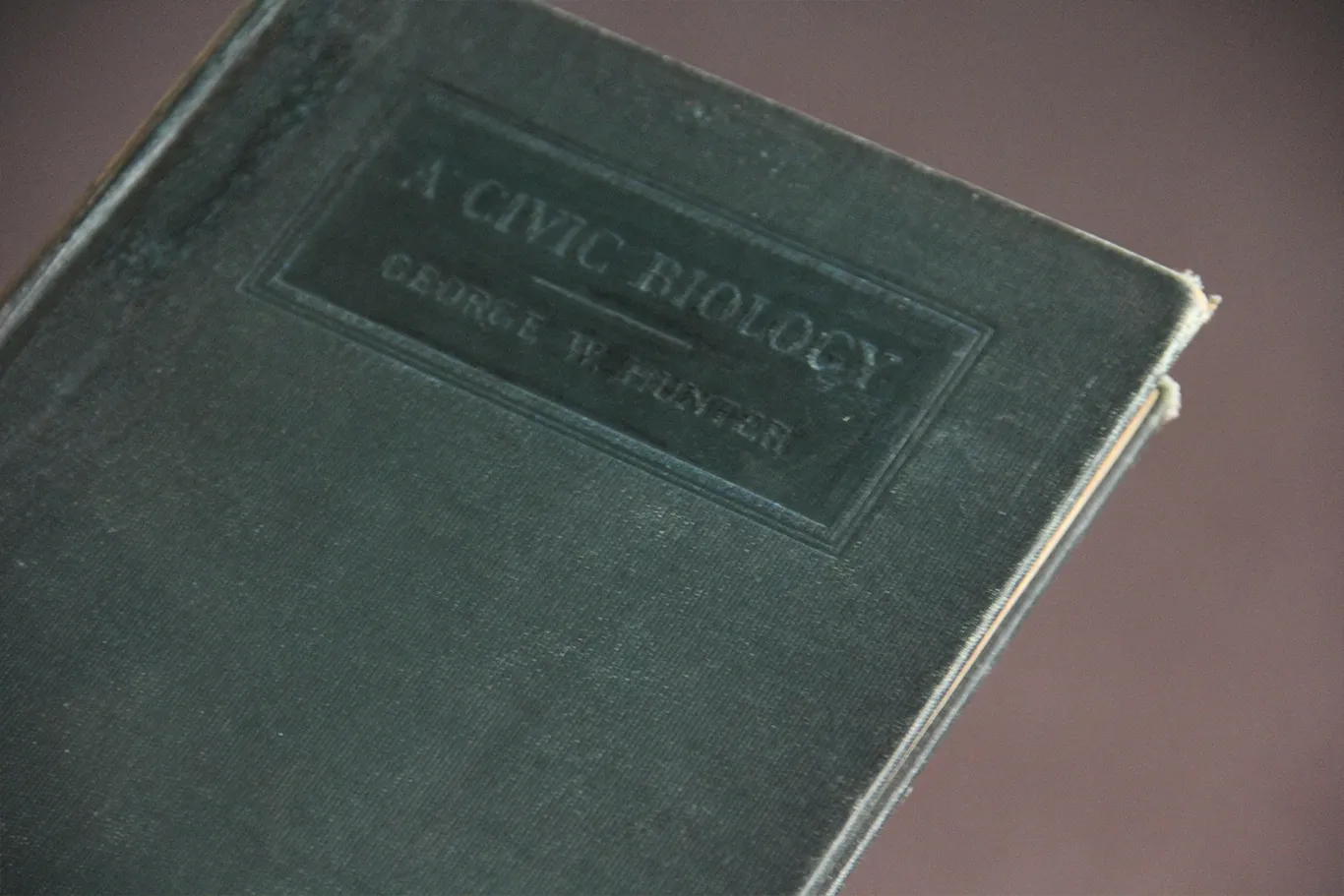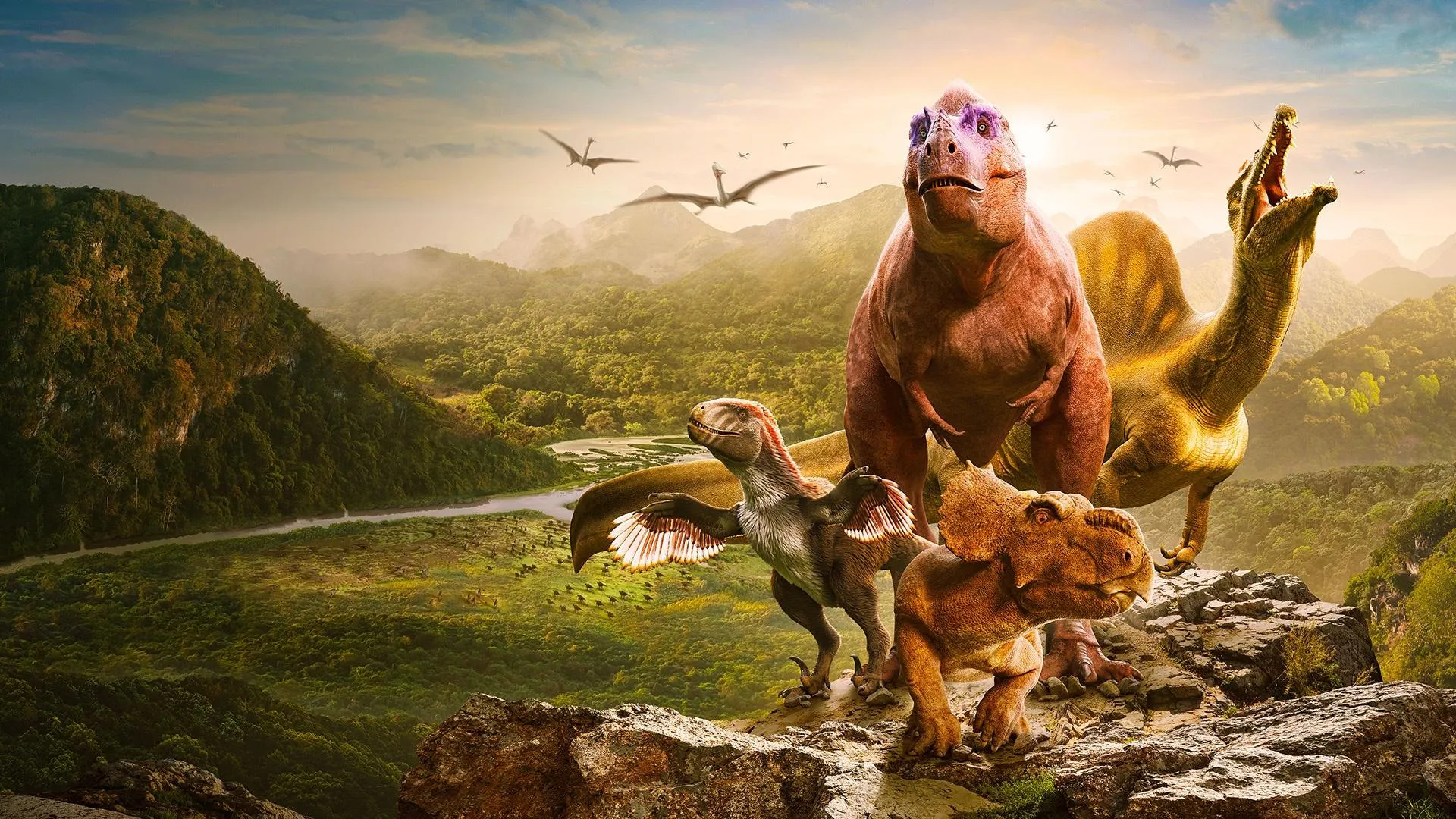HOST: 80 miles south of Knoxville, Tennessee, lies the city of Dayton. Ever heard of it? Well, you might have, because in the sweltering July heat of 1925, one of the most high-profile trials in U.S. history took place here, the Scopes Monkey Trial. Appraiser Francis Wahlgren joined Roadshow at the site of the famous debate's battleground, the Rhea County Courthouse, to discuss a few revolutionary books.
APPRAISER: The Scopes Monkey Trial became very famous to us all today because of its being the great debate between religion and science. But actually, it began as a mere publicity stunt. In March of 1925, the Butler Act was passed in Tennessee, making it illegal to teach evolution in school.
The ACLU picked up on this and began to run pieces in the local papers here in Tennessee trying to find someone who would come forward to challenge the Butler Act. Well, the mines had been closed here in Dayton and the civic leaders cleverly thought this would be an opportunity to bring national attention to their town, and they came up with someone who they would sponsor to be that teacher. John Thomas Scopes was a substitute teacher and a football coach, and he came forward and was represented by the ACLU in their fight against the government of Tennessee. It really escalates very quickly, and all of a sudden you've got the ACLU bringing in on their side the famous attorney Clarence Darrow, and on the other side, William Jennings Bryan, three-time presidential candidate, comes in to represent the prosecution. More than 2,000 people might have been in this courtroom. Between the heat and the crowds and the weight of the people in this room, the court had to take place outside for some of the sessions.
HOST: And the entire trial was simply saying, "Did he teach evolution or not?"
APPRAISER: Right. This really grew into a much wider debate than simply teaching from the textbook. It really was about evolution itself. The book that he would have been handed to go into the classroom and teach is a book I've brought along with me, George William Hunter's A Civic Biology. It was published in 1914. In that, there are sections that clearly discuss the topic of evolution and Darwin. And from a book from 1914, it would have been unusual not to find a reference to evolution in a scientific textbook. 11 years later, when the Butler Act when into effect, evolution had to be removed from the textbook in Tennessee. Textbooks were published in vast, vast quantities for many, many, many students. They were recycled, reused. A copy like this, I would say, would have an auction estimate of $100 to $200, which may not sound like a lot, but in the world of textbooks, it's a great deal of money. When it comes to evolution, the central and primary figure is Charles Darwin, and it's his works that command the greatest prices at auction. In 1859, Darwin published The Origin of Species, which was really his first pronouncement of the theory of natural selection in its broadest sense. In 1871, Darwin published his Descent of Man in two volumes, and in that book he for the first time uses the term "evolution" and he relates it specifically to the evolution of humankind.
HOST: How many of these were published?
APPRAISER: The first issue would have been the first run of copies that would have come off the press, and that number would have been around 2,500 copies.
HOST: If we were able to find a copy of both volumes in good condition, what would we expect to pay for that today?
APPRAISER: A fine copy of Descent of Man would have an auction estimate of $3,000 to $4,000.
HOST: And we go to On the Origin of Species. Do we know how many of those were printed?
APPRAISER: Probably around 1,200 copies.
HOST: I see.
APPRAISER: And being the one that really is often considered the most important book printed in the 19th century, it would have an auction estimate of $100,000 to 150,000.
HOST: Francis, this has been wonderful talking to you about all of this.
APPRAISER: Thank you for having me; it's great to be here.
